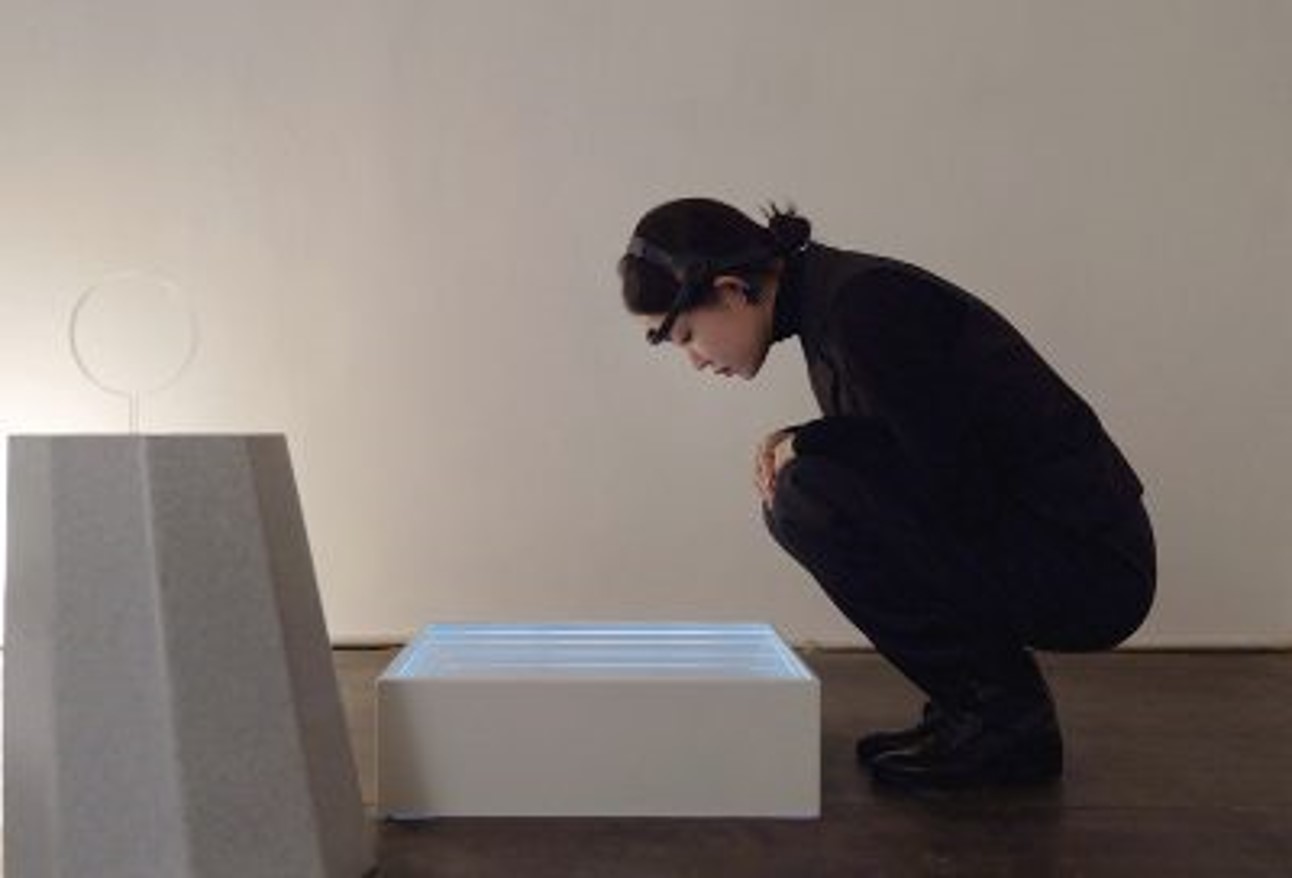
Art Title : Narcissus
Exhibition : SIGGRAPH Asia 2020: Untitled & Untied
Artist : Seol Lee
PPT File :http://www.fbilab.org/nthu/aet/seminar/wp-content/uploads/2021/05/書報討論210518_Kai.pdf
– 作品論述 (Art Statement)
Summary
Sensing the brainwave of an appreciator, creates an interaction that the higher concentration on the reflection on the surface of water, the more blurred observation. That experience reflects the reverse of the Narcissus story and expresses that mirrored image of the participant could not exist as complete subject.
Abstract
Narcissus was a hunter in Greek mythology who fell in love with his own reflection in the water. Narcissus is the origin of the term narcissism. This artwork , as its name suggests, is based on the myth of Narcissus.
A narcissistic ego that conceals the weakness of the individual, focuses energy only on itself. Everyone has narcissism even if a little. Excessive narcissism causes lots of problems from isolation because fascinating by the perfection of oneself makes relationship with the others closed.
Sensing the brainwave of an appreciator, creates an interaction that the higher concentration on the reflection on the surface of water, the more blurred observation. Through this interaction, the viewer is interrupted from being deeply immersed in oneself.
That experience reflects the reverse of the Narcissus story and expresses that mirrored image of the participant could not exist as complete subject. Also, this artwork is referred to the ‘Mirror stage’ hypothesized by Jacques Lacan(1901-1981). Unlike the ego-psychologists’ assertion that we should strengthen our ego, Jacques Lacan points out the narcissistic ego which is imaginary in human beings and says that we can grow up as a healthy subject through acknowledging that we are lacking ego not just strengthening the ego.
Leaves swaying in the wind, water drops in the hands, rattling buses, chattering people. The world is full of senses. Senses always tells us who we are, and we forget about it. In an increasingly fast and complex society, humans lack the time to identify self-existence. Technology – perhaps leading to alienation of human on the one hand – can serve as a means to make an individual clearer by providing an opportunity for self-reflection and objectifying individuals in various ways.
I hope to make an individual to be another sensor that can sense existence of self and the world through my interactive artworks that use sensors as mediums. Then the individual becomes a sensor and also becomes a medium of artworks again. That’s what I think of as interaction between interactive artwork and participants. The appreciators will be able to reflect the self-existence by bringing out themselves to feel the things in whole senses that output through themselves.
